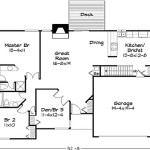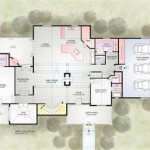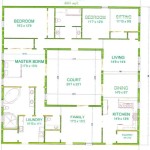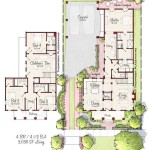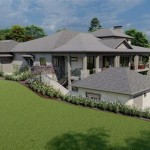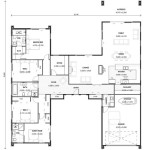Pole Barn Style House Plans: A Comprehensive Guide
Pole barn style house plans are gaining popularity for their cost-effectiveness, construction efficiency, and design flexibility. This architectural approach, traditionally used for agricultural and storage buildings, is now being adapted to create unique and spacious residential dwellings. Understanding the nuances of these plans is crucial for anyone considering this type of construction.
The essence of a pole barn house lies in its structural system. Instead of a traditional foundation and load-bearing walls, it relies on large, pressure-treated posts (or poles) embedded in the ground. These posts are spaced at regular intervals and serve as the primary support for the roof and walls. This construction method significantly reduces the amount of excavation and foundation work required, leading to considerable savings in both time and materials.
The shift towards using pole barn construction for residential purposes is driven by several factors. Firstly, the open floor plans afforded by this structural system are highly desirable in modern home design. Secondly, the speed of construction is often faster compared to conventional methods. Thirdly, the ability to customize the exterior and interior finishes allows for a wide range of aesthetic options, making it a versatile choice for diverse architectural styles.
Key Point 1: Advantages of Pole Barn House Construction
The benefits of using pole barn construction extend beyond initial cost savings. Consider the long-term advantages that contribute to its growing interest.
Cost-Effectiveness: The most significant advantage is the reduced construction cost. Fewer materials, less excavation, and faster construction times all contribute to lower overall expenses. The elimination of a traditional foundation, particularly in areas with challenging soil conditions, can lead to substantial savings.
Construction Speed: Because the structural framework is relatively simple, pole barn houses can be erected quickly. This is especially beneficial for those looking to move into their new home in a timely manner. The streamlined construction process also minimizes disruption and labor costs.
Design Flexibility: While the basic structure is straightforward, the design possibilities are virtually limitless. Exterior finishes can range from traditional siding and brick to modern metal and stucco. Interior layouts can be easily customized to suit individual needs and preferences, offering open-concept living spaces or divided rooms as desired.
Energy Efficiency: Pole barn construction offers excellent opportunities for energy efficiency. The large wall cavities can be easily insulated with various materials, providing superior thermal performance compared to conventionally framed walls. This leads to lower heating and cooling costs over the lifespan of the home.
Durability: When constructed properly with pressure-treated posts and proper drainage, pole barn houses are remarkably durable. The posts are resistant to decay and insect damage, ensuring the structural integrity of the building for many years. The simple design also reduces the likelihood of structural problems arising from complex load-bearing systems.
Key Point 2: Design Considerations for Pole Barn House Plans
When selecting or developing pole barn house plans, several design considerations must be taken into account to ensure a functional, aesthetically pleasing, and structurally sound home.
Structural Integrity: Ensuring the structural integrity of the pole barn is paramount. This involves properly spacing the posts, selecting appropriate materials for the frame, and using correct construction techniques. Consulting with a qualified structural engineer is essential to ensure the building meets local building codes and can withstand wind and snow loads specific to the region.
Foundation and Drainage: While a traditional foundation is not required, proper drainage around the posts is crucial to prevent water damage and prolong their lifespan. Gravel backfill around the posts and a well-graded site will help to direct water away from the structure. In some cases, a shallow concrete collar around the base of the posts may be beneficial.
Insulation and Ventilation: Adequate insulation is essential for maintaining a comfortable indoor environment and reducing energy consumption. Spray foam insulation is a popular choice for pole barn houses due to its ability to fill irregular spaces and provide a high R-value. Proper ventilation is also important to prevent moisture buildup and maintain air quality. Consider installing vents in the roof and walls to allow for air circulation.
Interior Layout: The open floor plan afforded by pole barn construction offers great flexibility in interior design. Consider how you will utilize the space and plan the layout accordingly. Think about the flow between rooms, the placement of windows and doors, and the location of utilities such as plumbing and electrical systems.
Exterior Finishes: The exterior appearance of your pole barn house can be customized to suit your personal taste and blend with the surrounding environment. Common exterior finishes include siding, brick, stone, metal, and wood. Consider the maintenance requirements of each material and choose a finish that is both aesthetically pleasing and durable.
Building Codes and Permits: Before starting construction, it is essential to obtain the necessary building permits and ensure that your plans comply with local building codes. Building codes vary from region to region, so it is important to consult with local authorities to ensure compliance. This may include requirements for fire safety, structural integrity, and energy efficiency.
Key Point 3: Types of Pole Barn House Plans
Pole barn house plans encompass a wide range of styles and configurations. Understanding the available options can help in selecting the plan that best aligns with specific needs and preferences.
Ranch-Style Pole Barn Homes: These homes typically feature a single-story layout with an open floor plan. They are ideal for those seeking accessibility and ease of maintenance. Ranch-style pole barn homes often incorporate large windows and sliding doors to create a connection with the outdoors.
Two-Story Pole Barn Homes: These homes offer more living space on a smaller footprint. They are suitable for families or those who require multiple bedrooms or home offices. Two-story pole barn homes often feature a combination of open living areas and private spaces.
Barndominiums: This term, a portmanteau of "barn" and "condominium," refers to pole barn houses that combine living quarters with workshop, storage, or recreational spaces. Barndominiums are popular among those who enjoy hobbies or need space for their business. They often feature large garage doors or loading docks for easy access.
Custom-Designed Pole Barn Homes: For those who have specific design requirements, a custom-designed pole barn home may be the best option. Working with an architect or designer allows for the creation of a unique and personalized home that meets individual needs and preferences. Custom plans can incorporate a variety of architectural styles and features.
Prefabricated Pole Barn Homes: While not as common, prefabricated or kit pole barn homes are available from some manufacturers. These kits include all the necessary materials and instructions for constructing the basic structure. Prefabricated pole barn homes can be a cost-effective and convenient option for those who are comfortable with DIY projects.
Regardless of the type of pole barn house plan selected, careful planning and attention to detail are essential. Consulting with experienced professionals, such as architects, engineers, and contractors, can help to ensure that the project is successful and that the resulting home is safe, durable, and comfortable.
The internal configuration within the pole barn structure offers significant flexibility. Walls are not inherently load-bearing, which allows for an open floor plan. Interior walls can be positioned to create rooms of various sizes and functions, according to the homeowner’s needs. Plumbing and electrical systems are typically run within the wall cavities, similar to traditional construction methods.
Exterior design options for pole barn houses are vast. Traditional vinyl siding or wood siding can be used to create a classic look. Metal siding is a durable and low-maintenance option that can give the house a modern aesthetic. Brick or stone veneer can be added to enhance the visual appeal and provide additional insulation. The roof can be designed with various slopes and materials, such as asphalt shingles, metal roofing, or wood shakes, to complement the overall architectural style.

Stunning Photos By Stevendlevinsky

Pole Barn House Plans Post Frame Flexibility

Residential Pole Buildings Post Frame Barn Homes Lester

Pole Barn House Plans Post Frame Flexibility

Pole Barn Post Frame Plan Clinton Building Architectural Floor Plans Homes

Loving The Wyoming Floor Plan Metal House Plans Barn Style Pole

Barn Style House Plans In Harmony With Our Heritage

Post Frame Home Barndominium Bozeman Brick Exterior House Country Plans Pole Barn

Building A Pole Barn House 6 Big Things To Consider

Barndominium Plans Barn House Floor Houseplans Com

